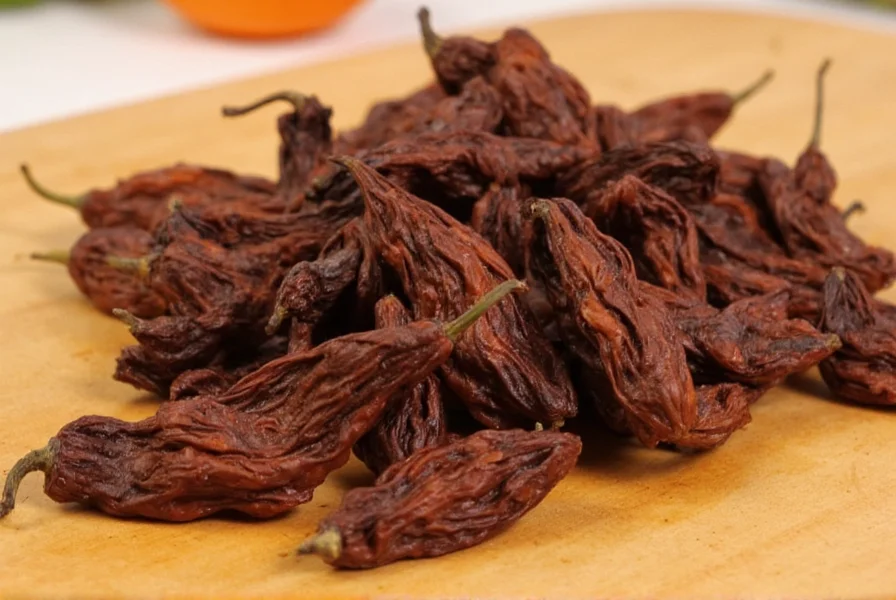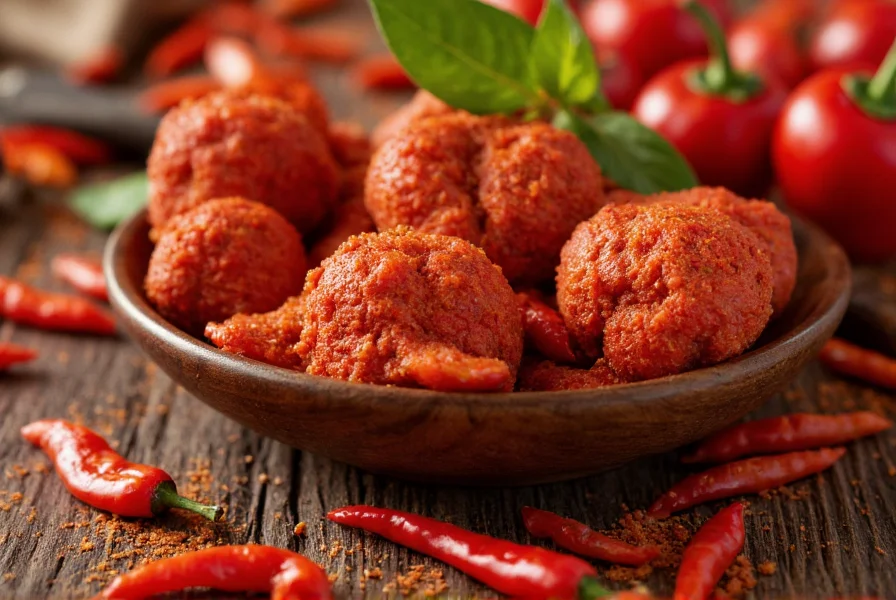
Understanding Chipotle Peppers: Beyond the Restaurant Name
When you search for "chipotle the pepper," you're likely seeking clarification about the actual ingredient, not the popular restaurant chain. This confusion is understandable given the shared name, but chipotle peppers have a rich culinary history that predates the restaurant by centuries.
What Exactly Is a Chipotle Pepper?
The term "chipotle" comes from the Nahuatl (Aztec) language, combining "chil" (chili pepper) and "poctli" (smoked). True chipotle peppers are ripe red jalapeños that have been smoke-dried, transforming their flavor profile dramatically from their fresh counterparts.
Unlike fresh jalapeños which are green and grassy, chipotles develop a deep reddish-brown color, wrinkled texture, and complex flavor through the smoking process. This traditional preservation method was developed by indigenous peoples in Mesoamerica long before European contact.
Chipotle Pepper Varieties You'll Encounter
When shopping for chipotle peppers, you'll typically find them in three main forms:
| Form | Description | Best Uses |
|---|---|---|
| Whole dried chipotles | Smoke-dried jalapeños in their natural state | Rehydrating for sauces, salsas, and braises |
| Chipotles in adobo sauce | Dried peppers rehydrated and canned in a tangy tomato-based sauce | Adding to soups, stews, marinades, and dips |
| Chipotle powder | Ground dried chipotle peppers | Dry rubs, spice blends, and seasoning meats |
Flavor Profile and Heat Level Explained
Understanding chipotle pepper heat level is essential for home cooks. On the Scoville scale, chipotles measure between 2,500-8,000 units, making them significantly hotter than poblano peppers (1,000-2,000 units) but milder than habaneros (100,000-350,000 units).
The smoking process creates a distinctive flavor profile that combines:
- Smoky depth (from the wood used in smoking)
- Earthy undertones
- Sweetness from the fully ripened red jalapeño
- Moderate heat that builds gradually
This complex flavor makes chipotle peppers a versatile ingredient that adds depth to dishes without overwhelming heat when used appropriately.
How to Use Chipotle Peppers in Your Cooking
Working with chipotle peppers requires some technique to maximize their flavor. For whole dried chipotles, rehydration is the first step:
- Place dried peppers in a bowl
- Cover with hot water or broth
- Let soak for 20-30 minutes until softened
- Remove stems and seeds (for less heat)
- Blend or chop for use in recipes
When using chipotles in adobo sauce, remember that the sauce itself contains vinegar, garlic, and spices that contribute to the overall flavor. Start with one pepper plus a spoonful of sauce, then adjust to taste. The sauce freezes well in ice cube trays for future use.
Common Substitutions When Chipotle Peppers Aren't Available
If you're searching for chipotle pepper substitutes, consider these alternatives based on what aspect of chipotle flavor you need:
- For smokiness: Smoked paprika (use 1:1 ratio)
- For heat and earthiness: Ancho chili powder with a dash of liquid smoke
- For chipotles in adobo: Blend 1 tsp smoked paprika + 1/2 tsp tomato paste + pinch of garlic powder + few drops vinegar
Remember that no substitute perfectly replicates the unique combination of smoke, heat, and earthiness that defines authentic chipotle peppers.
Storage Tips for Maximum Freshness
Proper storage extends the shelf life of chipotle peppers:
- Dried chipotles: Store in an airtight container in a cool, dark place for up to 1 year
- Chipotles in adobo: Transfer to a clean jar with the sauce covering them completely; refrigerate for up to 3 weeks or freeze for 6 months
- Chipotle powder: Keep in a tightly sealed container away from light and heat for 6-12 months
Debunking Common Chipotle Pepper Misconceptions
Many people wonder: are chipotle peppers the same as the restaurant? The answer is no. The restaurant chain adopted the name from the pepper, but they're entirely separate entities. Understanding chipotle pepper vs jalapeño differences is also important - fresh jalapeños are the starting point, but chipotles are their smoke-dried counterparts with completely different flavor characteristics.
Another common misconception is that all chipotle products are extremely hot. While they do provide noticeable heat, the smokiness and earthiness balance the spiciness, making them approachable for most palates when used in appropriate quantities.
Nutritional Benefits of Chipotle Peppers
Beyond their flavor, chipotle peppers offer several nutritional benefits. Like other chili peppers, they contain capsaicin, which has been studied for potential metabolic benefits. They're also a good source of:
- Vitamin C (especially when fresh)
- Vitamin A (from the carotenoids in ripe peppers)
- Dietary fiber
- Various antioxidants
The smoking process preserves many of these nutrients while adding complexity to the flavor profile.
Culinary Applications Across Global Cuisines
While chipotle peppers originated in Mexican cuisine, their versatility has led to adoption in many culinary traditions. Professional chefs use them to add depth to:
- Barbecue sauces and rubs
- Mayonnaise and aiolis
- Bean dishes and chili
- Marinades for meats and vegetables
- Even chocolate desserts for a surprising flavor contrast
When incorporating chipotle peppers into recipes, start with small amounts and taste as you go. Their flavor intensifies during cooking, so it's easier to add more than to correct an overly spicy dish.
What is the difference between a chipotle pepper and a jalapeño?
A chipotle pepper is actually a smoke-dried ripe red jalapeño. Fresh jalapeños are green, grassy, and milder, while chipotles are red-brown, wrinkled, and have a distinctive smoky, earthy flavor with more complex heat. The smoking process transforms the jalapeño's chemical composition, creating entirely different flavor compounds.
How hot are chipotle peppers compared to other common peppers?
Chipotle peppers range from 2,500 to 8,000 Scoville heat units. They're hotter than poblano peppers (1,000-2,000 units) and banana peppers (0-500 units), but milder than cayenne peppers (30,000-50,000 units) and habaneros (100,000-350,000 units). The heat builds gradually rather than hitting immediately like some hotter peppers.
Can I make my own chipotle peppers at home?
Yes, you can make homemade chipotle peppers by selecting fully ripened red jalapeños, then smoke-drying them. Use a smoker or grill with indirect heat and wood chips (oak, hickory, or pecan work well) at 200-225°F for 4-6 hours until they're leathery and darkened but not brittle. This process requires careful temperature control to achieve the proper smoke-dried texture without burning.
Why are chipotle peppers often found in adobo sauce?
Adobo sauce serves multiple purposes for chipotle peppers: it rehydrates the dried peppers, preserves them, and enhances their flavor. The traditional adobo sauce contains vinegar (for acidity and preservation), garlic, onions, oregano, and sometimes tomatoes. This combination complements the smoky heat of the chipotles and creates a versatile cooking ingredient that's ready to use.
How can I reduce the heat of chipotle peppers in a recipe?
To reduce chipotle pepper heat, remove the seeds and inner membranes where most capsaicin resides. You can also use less pepper than the recipe calls for, balance with dairy (like yogurt or sour cream), add sweetness (honey or sugar), or incorporate acid (lime juice or vinegar). Remember that the heat will mellow slightly during cooking, so it's best to add chipotles gradually and taste as you go.











 浙公网安备
33010002000092号
浙公网安备
33010002000092号 浙B2-20120091-4
浙B2-20120091-4